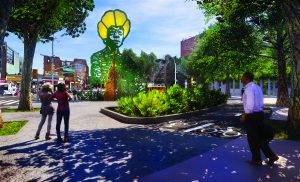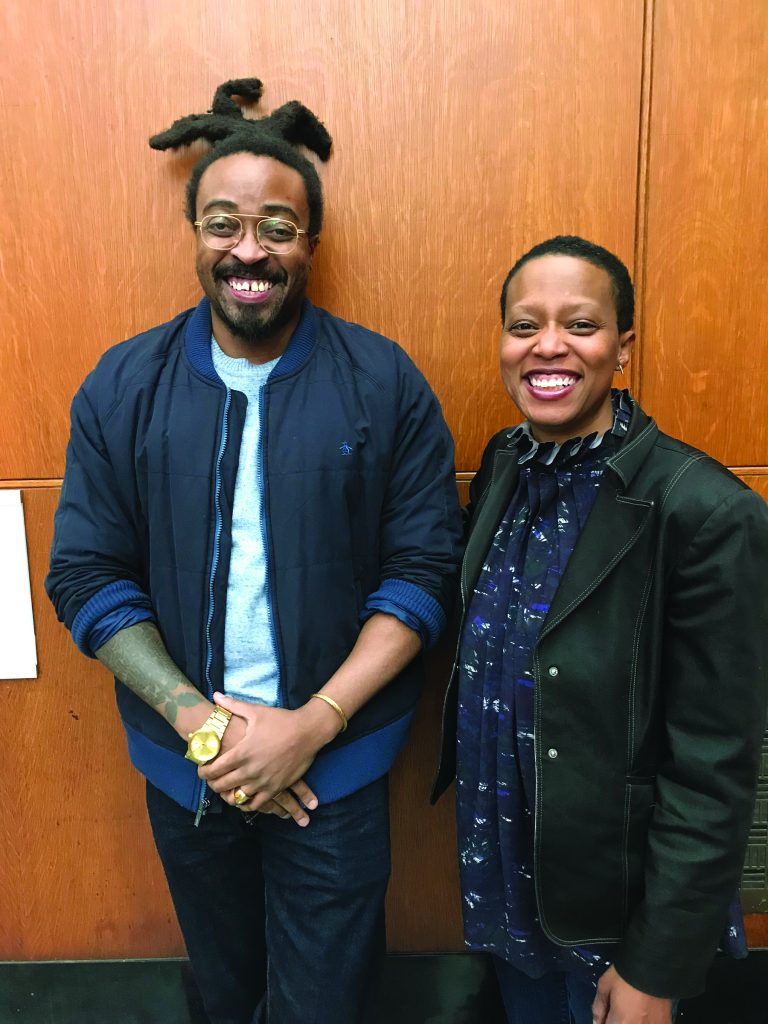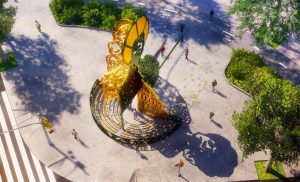
Shirley Anita St. Hill was born and raised in Brooklyn New York to Caribbean immigrant parents. She attended Brooklyn College and Columbia University, earning a masters in elementary education. After working as a teacher and daycare director, she moved into public service serving two terms in NY State Legislature. In 1968, she became the first black woman elected to Congress, representing NY’s 12th congressional district of Bedford-Stuyvesant. Then in 1972, she became the first black woman to run for President under a major political party saying,
I am not the candidate for Black America, although I am black and proud. I am not the candidate of the women’s movement of this country, although I am a woman, and I am equally proud of that. I am the candidate of the people of America.”
Shirley Chisholm on her presidential run in 1972
Chisholm went on as a founding member of the Congressional Black Caucus and the Congressional Women’s Caucus. She retired after 14 years and passed away on New Year’s Day 2005. Ten years later, Barack Obama awarded her the Presidential Medal of Freedom. And now her portrait, commissioned by members of Congress- an honor usually only reserved for party leaders- watches over the most diverse and most female freshman class Congress has ever seen.
Chisholm will once again make history as the first female historical figure to have a monument dedicated to her in Brooklyn.
Artists Amanda Williams and Olalekan Jeyifous’ design “Our Destiny, Our Democracy” honors Shirley Chisholm in a way that reimagines the functional purpose and ideology of the American monument. “This artwork will be bright, bold, and makes a statement – just like Chisholm herself,” says First Lady Chirlane McCray. This project, from She Built NYC, is working to represent the women who have shaped the city while addressing the gender gap in NYC monuments. Currently, just 5 of the 150 statues in NYC depict women.
She Built NYC will change this male-dominated landscape of historical figures. So far, five trailblazing women will be commemorated in upcoming projects set to hit the boroughs- Billie Holiday (Queens), Elizabeth Jennings Graham (Manhattan), Dr. Helen Rodriguez Trías (Bronx), Katherine Walker (Staten Island), and of course, Shirley Chisholm will return to her home of Brooklyn. The 40 foot-tall structure, set for completion by the end of 2020 at the southeastern corner of Prospect Park, encompasses Shirley’s life’s work and her mindset of coming together through democracy.
During Shirley’s time in Congress, she worked to represent the needs of the people. Specifically, those who were underrepresented, which in 1968 and still today means women, people of color, and the youth. Her wants for equal democracy and unwillingness to back down from what she saw was wrong earned her the nickname “Fighting Shirley.”
Speaking about the title Dr. Zinga Fraser, Director of The Shirley Chisholm Project of Brooklyn Women’s Activism says, “The name referred to Chisholm’s commitment to taking on the status quo… As a Black woman in America who sought to be a “catalyst for change” in a historically oppressive society, fighting was a routine aspect of her life… Any narrative about Chisholm or Black women’s activism that overlook this struggle is a misleading narrative.”
During Chisholm’s time in office, there were more bills passed relating to child care, education, and human rights than any other point in history. Dr. Fraser points out, “She would argue that a nation’s most important resource was ‘its children.’” Distinguishing herself as a champion of youth, many agree that every school child should know who Shirley Chisholm was. And know they will! – when students, parents, teachers, and all Brooklyn residents walk down Parkside Ave to see Chisholm’s beautiful figure.
The vibrant design from Williams and Jeyifous works to embrace this fighting spirit. The multi-prog, 40-foot tall steel sculpture reconstructs Chisholm’s portrait, the United States Capitol Building, and decorative patterns of vines and leaves. Her strong eyes with signature glasses, full head of curly hair, and poise figure will greet the public reminding us of her unique gift to connect to both children and adults with grace and empathy. Throughout the day these silhouetted compositions will cast shadows along the sidewalks complementing the surrounding trees and vegetation. These strikingly colorful and dynamic pieces assemble an amphitheater-style stage; inviting people to come together, interact, and occupy the space below Chisholm’s guiding light. The elevated seats will be inscribed with the names of women who followed- and will follow- in Fighting Shirley’s revolutionary footsteps; reminiscent of her famous quote, “If they don’t give you a seat at the table, bring a folding chair.”

Credit: Faye Penn, women.nyc.
With differing styles rooted in architectural study, Williams and Jeyifous’ individual and collaborative work focus on public spaces and public conversations. “Our project celebrates Shirley Chisholm’s legacy as a civil servant who ‘left the door open’ to make room for others to follow in her path toward equity and a place in our country’s political landscape. We have designed a monument in which her iconic visage can be immediately recognizable while also equally portraying the power, beauty, and dimensionality of her contributions to our democracy,” reads their artist statement.
“Our Destiny, Our Democracy” works to challenge the traditional notions of the American monument. Think Gaetano Russo’s Columbus Circle statue, or literally every monument just north at Grand Army Plaza. These traditional monuments commemorate figures by placing them in positions of power- strong and sturdy like the marble they are carved in. Telling us, “This person was important!”, but not much else. Many have sparked controversy that even Mayor De Blasio has addressed; “Our approach will focus on adding detail and nuance to – instead of removing entirely – the representations of these histories. And we’ll be taking a hard look at who has been left out and seeing where we can add new work to ensure our public spaces reflect the diversity and values of our great city.”
Williams and Jeyifous want to grant the ability to interact with art and tell that larger, more intersectional story. A narrative that showcases “the substance of Chisholm’s career- a career in which she fought for human rights and against corrupt and anti-democratic features of the U.S. political system… [and] created a foundation for candidates like Barack Obama and Hillary Clinton, but also candidates like Jesse Jackson and Bernie Sanders who sought to expand the electorate and/or advance under-represented philosophies.”
Dr. Zinga Fraser was part of the team that observed the artist presentation for the monument. She states, “We hope that the new monument will provoke conversation about Shirley Chisholm’s decision to become directly involved in politics even when the system and its defenders actively tried to tear her down. We hope that this will generate conversation about the unique challenges of marginalized communities and how they help transform American democracy for themselves and for humanity at large. We hope that it will also promote Chisholm’s long-held belief that direct involvement alone is the only thing that changes the system.”
The new 360-degree design will allow us to immerse ourselves in compelling examinations of history. From different points of view around the sculpture, the viewer will see varying ways the capital, vegetation, and Shirley herself come together. At no point is one piece wholly visible, in the same way, one never completely disappears. Instead, their relationship is inseparable.
Thanks to She Built NYC, these artists have been given the ability to reflect on our current political, social, and cultural climate; and from there, promote diverse and unique perspectives of history and relationships. Questioning the relationship between individuals and government, citizen and leaders, laws and communities, nature and humankind, and so on. By breaking down the traditional American monument, they have created public art whose meaning and connotations are ever changing. Soon, we will see- and be able to participate in!- the discussions Williams and Jeyifous’ piece will provoke – during this the current Trump Administration, the upcoming 2020 election, and wherever the future of politics and American life takes us. The beauty and revolutionary aspect of this monument is not only that its subject is black and female, but that its narrative will transform with each individual viewer; inviting them to sit, think, and share their experiences, identity, and even arguments with others in the same way that Shirley Chisholm did.
We look forward to experiencing this new kind of monument accomplish its goal of portraying a multidimensional narrative- a more diverse, complete, and malleable story of equal democracy that will transform how we view history for years to come.

